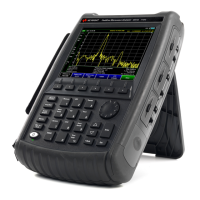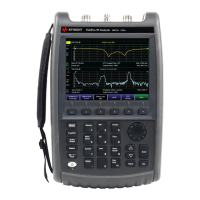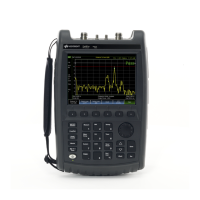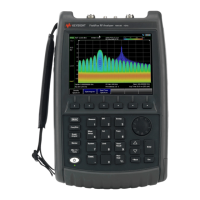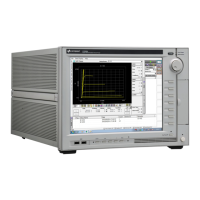56 Keysight N9927-90001 User’s Guide
CAT (Cable and Antenna Test) Mode
1-Port Cable Loss Measurements
A 2-port Insertion Loss measurement is usually more accurate than a 1-port
Cable Loss measurement. However, to perform a 2-port Insertion Loss
measurement, both ends of the cable must be connected to the FieldFox.
How to make a 1-port Cable Loss Measurement
1. Press Preset then Preset.
2. Then More
then Cable Loss (1-Port)
3. Connect the cable to be tested.
4. Press Freq/Dist
and enter Start and Stop frequency values of the
measurement.
5. Press Sweep 3
then Min Swp Time. Increase the Sweep Time until a stable
trace is visible on the screen. The amount of time that is required increases
with longer cable lengths. Learn more in the Supplemental Online Help:
http://na.support.keysight.com/fieldfox/help/SupHelp/FieldFox.htm
6. Remove the cable to be tested.
7. Press Cal 5
, then QuickCal or Mechanical Cal. Mechanical Cal.
8. Follow the prompts to perform calibration at the end of the jumper cable
or adapter. Learn more about Calibration in “How to Perform a
Calibration” on page 123
9. Connect the cable to be tested.
10.Connect a LOAD at the end of the cable to be tested. This limits the
reflections to faults that are located in the cable under test.
11.Press Trace 6
then Math and Memory then Data->Mem to store the trace
into Memory.
12.Remove the LOAD and leave the end of the cable to be tested open.
In high-loss conditions, a Cable Loss measurement becomes ‘noisy’ as the
test signal becomes indistinguishable in the FieldFox noise floor. This can
occur when measuring a very long cable and using relatively high
measurement frequencies. To help with this condition, use High Power
(page 53) and Averaging. (page 50).
QuickCal is only available on N991xA/2xA/3xA models.
Low-level standing waves (also known as ‘ripple’) which may be visible in
reflection measurements, can hide the actual loss of the cable. Steps 10
through 13 can minimize the ripple. Perform the measurement with and
without steps 10 through 13 and choose the method with the least amount
of ripple.

